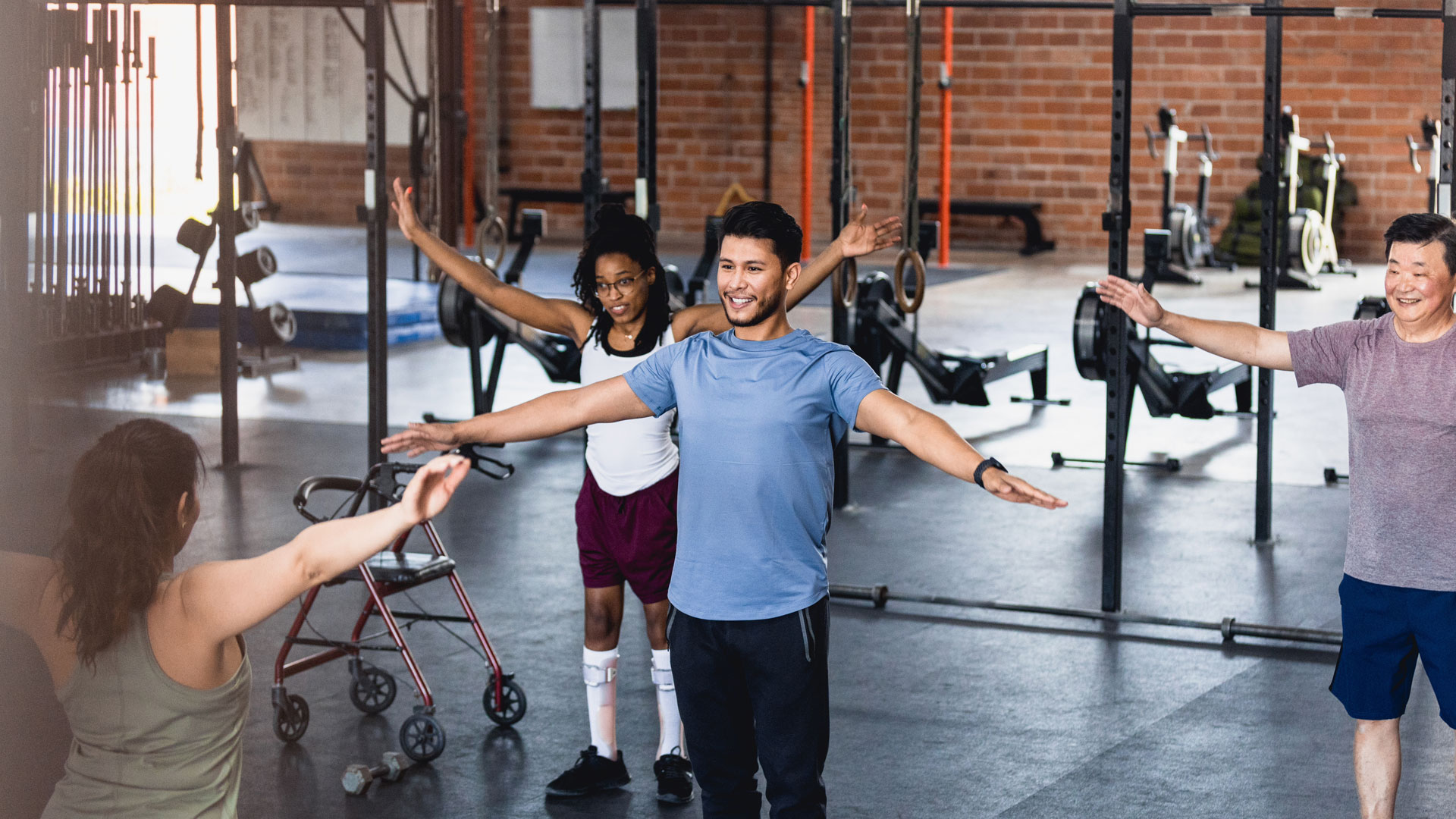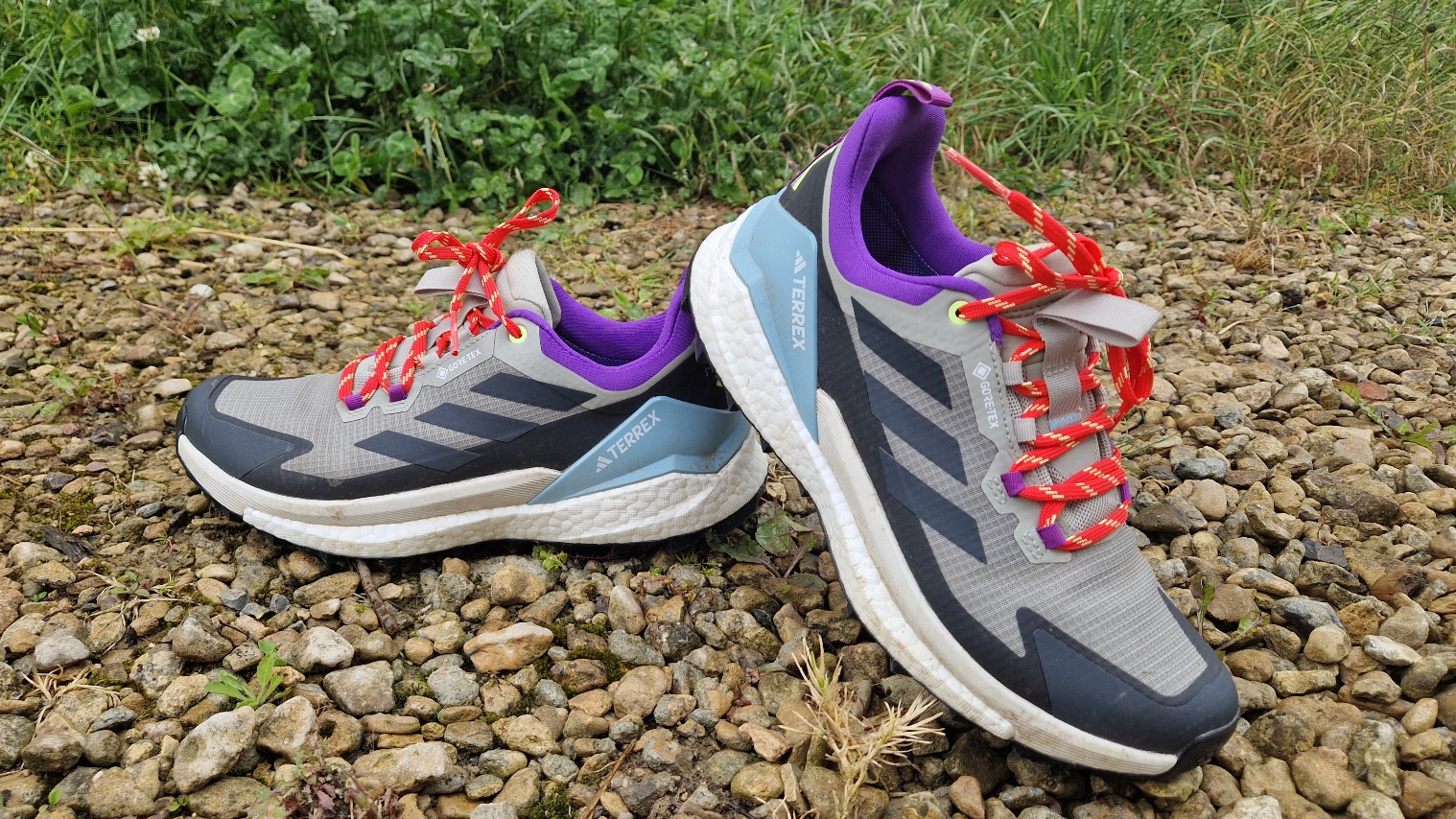Shoulder muscle pain workout: 6 moves to build up strength
With this shoulder muscle pain workout , you can stay active without doing more damage

Shoulder muscle pain workouts offer a way of staying fit without adding to your existing injury. Here, we’ve compiled a workout curated especially by experts in the field so that you can follow the best advice until you’re about to see a professional. We’ll also delve into why shoulder pain occurs, what you can do about it, and how to exercise if you’re currently suffering from it.
While some moves are equipment-free, one thing you might find useful is to make note of our guide to the best resistance bands, which some of the below exercises will require due to their rehab qualities and ability to help improve mobility.
And if you’re in discomfort, you’re not alone as shoulder pain is one of the most common ailments when it comes to injuries, affecting between 18 and 26% of adults around the world at some point in their life, according to recent studies.
So if you’re ready to remedy that pain, here’s what you need to know.
What causes shoulder muscle pain?
The shoulder is a complex joint. In fact, it’s the most mobile joint in the body, with a wide variety of muscles contributing to its strength and positioning. So why is it so susceptible to pain and discomfort?
If anyone is positioned to explain, it’s Carlos E Cobiella, a Consultant and Shoulder, Elbow and Sports Surgeon working at The Shoulder Practice.
Cobiella tells us that the shoulder joint is the most mobile joint in the body, and it’s this that - while allowing for excellent function - makes it prone to injury and painful conditions. So when something goes wrong, free movement and mobility can become extremely difficult and in some cases impossible. It can really hamper a person’s quality of life, causing huge amounts of pain and discomfort.
Get the Fit&Well Newsletter
Start your week with achievable workout ideas, health tips and wellbeing advice in your inbox.
“The shoulder joint is based on a ball-and-socket mechanism, with a small and shallow socket and quite a big ball on it,” explains Cobiella. “It is inherently unstable and in order to improve the stability, we use the rotator cuff muscles. This is a group of muscles and tendons that surround the shoulder joint and keep the ball in a stable fulcrum.”
If you are experiencing shoulder pain, Cobiella says that, more often than not, this means the rotator cuff tendons have become irritated, inflamed, or damaged somehow, which can be extremely painful and can make everyday tasks all the more difficult to complete.
“Patients come to me for a number of reasons - they have sometimes damaged their shoulder playing sport - especially contact sports like rugby - or they have fallen off their bike and damaged their shoulder that way,” he says.
“I also see people who have damaged their shoulder from repetitive exercises, particularly overhead. This causes overuse injuries that manifest mostly on rotation i.e. impingement.

Poor technique when exercising can also cause damage, Cobiella says, so it’s important to make sure you are working with a qualified trainer to avoid causing injuries.
“The second group of patients I see are over the 50 age range, and usually have been experiencing pain due to general wear and tear, due to the soft tissues surrounding the shoulder degenerating with age. In these patients, the threshold to overuse is lower and it is easier to cause damage.”
Mike Jones, ex-British Army soldier, personal trainer, and founder of Better Happy, says that spending increasing amounts of time in seated and hunched over positions can also be a cause of shoulder problems.
“Over time, the muscles in the front of the shoulder become tight and the muscles in the back of the shoulder become weak and long,” Jones explains. “This leads to the shoulder moving out of its natural position, therefore creating ongoing pain.”
Although the temptation is to rest it and maybe ice it, this won't fix the problem, he adds.
“I encounter this issue with working professionals regularly and prescribe something called the RSS method to fix this issue: Release, Stretch, Strengthen.”
This revolves around releasing the tight muscles at the front of your shoulder and then strengthening the muscles in the back of the shoulder and rotator cuff (the shoulder blade).
“The worst thing you can do for shoulder pain is to avoid moving and training your shoulders,” Jones explains. “If your pain is intense first see a physio to ensure there's not something more significant going on, but nine times out of 10 a good physio will prescribe the RSS method.”
Can you exercise with shoulder muscle pain?
According to the NHS, exercise shouldn't make your existing shoulder pain worse overall. However, the body does state that practicing new exercises can sometimes cause short-term muscle pain as the body gets used to moving in new ways.
“This kind of pain should ease quickly and your pain should be no worse the morning after you've exercised,” the health organization says, adding that you should add exercises into your routine gradually to help your shoulder pain.
Sean Kazab, Strength Trainer at Fiit, says the best way to improve the stability of the shoulder and help it overcome further issues is by increasing strength.
“A lot of this strength can be gained from having a decent amount of upper body pushing and pulling exercises,” Kazab says. “It's important to make sure you’re getting your horizontal pressing and pulling in with certain exercises such as pushups, bench presses, and rows.”
The trainer also urges people not to forget about their overhead range, which can be accessed through vertical pushes and pulls, such as overhead pressing and pullups.
“It’s important to train your shoulder through a variety of planes of motion, especially upper-body pushing and pulling movements.”
Fiona Hawker, PT at Curves Gym, recommends doing a full-body workout using body weight as a way to ensure that you can safely strengthen your shoulder while getting a balanced workout.
“[Most gyms] offer both hydraulic resistance machines, which are safe as you can easily change and control the resistance - or do at-home bodyweight circuits if you can’t access a club,” she says.
Although, as with any exercise, you should always stop if the pain increases, she adds.
“If you have increased pain the morning after exercising, you should talk to a health care professional about your symptoms and get a tailored treatment plan.”

Shoulder muscle pain workout: 6 moves to build strength
If you’re suffering from shoulder pain, try the below exercises from our experts, regularly, to relieve shoulder aches and pains. However, if your pain is persistent after six weeks consult your doctor.
Cobiella’s top three exercises:
The Crossbody Pose
Hold the right hand out in front of the body, reach the left hand behind the right elbow and pull the right arm to the left and across the chest. Hold in this position for 30-50 seconds and then release. Repeat three-five times.
The Pendulum Swing
Lean over and support your non-injured side with a table or chair. Allow the sore sidearm to dangle down. Begin by drawing circles with your hand below. Make them small to start and gradually increase the circles in size. Perform the same exercise in reverse ensuring all movement bases are covered. Repeat throughout the day three-four times, especially first thing in the morning and at night.
The Head Rotation
Sit upright on a firm chair and tilt your chin toward your chest. You’ll feel a deep stretch in the back of your neck. Lean the head to the left and then again to the right to feel the stretch on both sides. Aim for a minute on each side.
Hawker’s top three exercises:
Arm circles
Use a chair or table for support and lean forwards so that one hand hangs down. Slowly draw your arm in a circle, gradually letting the circle increase in size and then change the direction.
Wall press-up
Stand facing the wall and place your hands flat on the wall. Bend your elbows, allowing your nose to come towards the wall but keep your core tight and your back straight, then push back to the start position. Gradually step a little further from the wall if there is no pain.
Resistance band
Using a resistance band attached to a doorknob, gently pull the band towards you and hold for a few seconds, then slowly release it back to the start position.
Shoulder pain treatment
Treating shoulder pain depends specifically on the type of shoulder problem you have. For example, problems caused by rotator cuff dysfunction are generally amenable to physiotherapy treatment.
“Such treatment would involve a hands-on component, with stretches, massages, and an exercise program designed to improve the function of the rotator cuff muscles and thus the dynamic stability of the ball-and-socket joint,” says Cobiella.
“Sometimes these exercises can be very painful in an irritated shoulder and cortisone injections can help with the pain and improve the efficacy of the physiotherapy program.”
The shoulder surgeon adds that 70% of patients with rotator cuff pain, without tears, will respond to this form of treatment within three months.
“If the pain persists beyond this time it would be useful to seek medical advice and consider treatment options at that stage. These can range from further injections and physiotherapy to keyhole surgery.
Lee Bell is a London-based journalist, copywriter, specializing in all things tech and lifestyle. He is also a qualified personal trainer. He started his journalism career a decade ago as a reporter covering the latest gadgets and innovations at tech tabloid The Inquirer. Lee went freelance in 2016 to broaden his expertise, moving into news, reviews and feature writing for a host of national print and online lifestyle titles such as GQ, Forbes, Esquire, Men’s Health, Wired, The Metro, and The Mirror. He has an insatiable appetite for travel, Dharma yoga, and the odd outdoor challenge.
-
 This might be your last chance to get my favourite waterproof walking shoe, and it's 25% off
This might be your last chance to get my favourite waterproof walking shoe, and it's 25% offDeal These Adidas Gore-Tex shoes are the most watertight I've tested
By Lou Mudge
-
 I tried wall balls for 30 days and the results surprised me
I tried wall balls for 30 days and the results surprised meTry this fitness challenge to boost total body strength
By Maddy Biddulph
